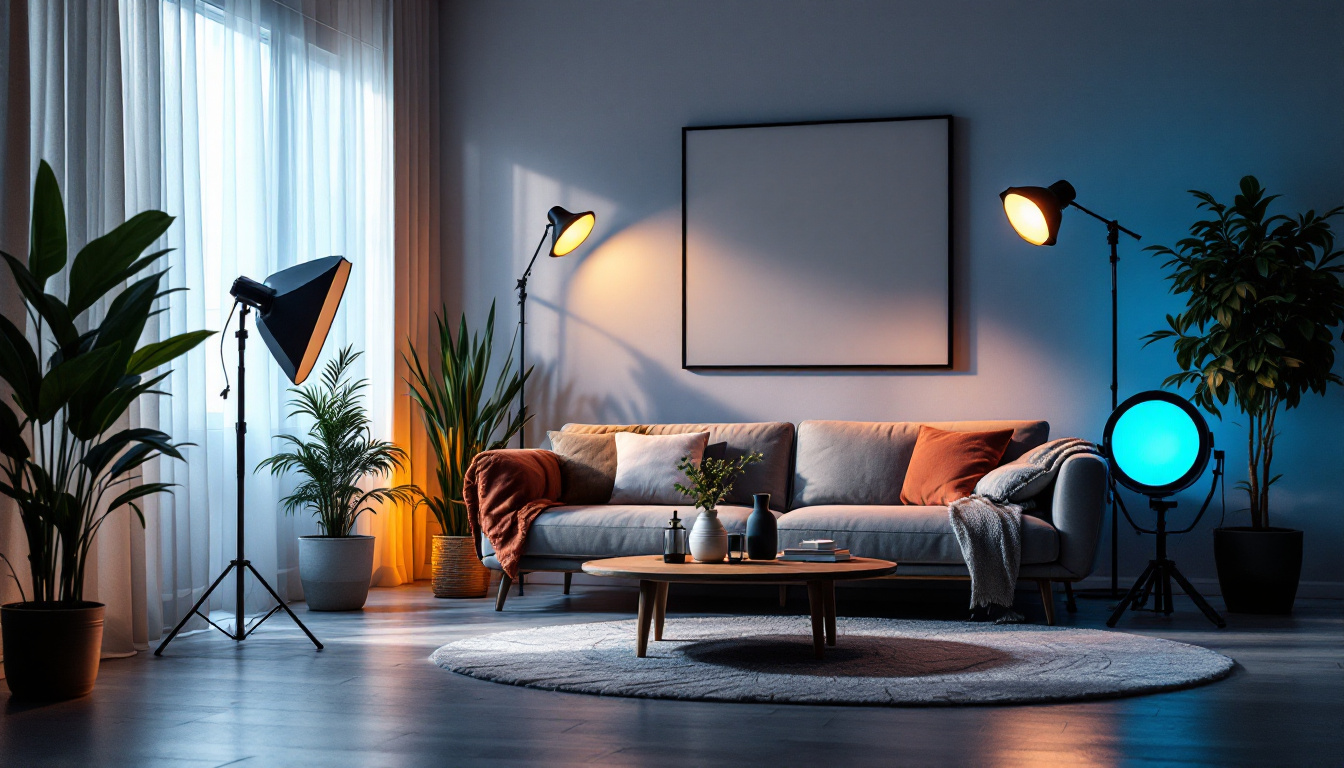
Choosing the right can light trim is crucial for lighting contractors who want to deliver quality results to their clients. The trim not only affects the aesthetics of a space but also influences the overall performance of the lighting system. This guide aims to provide insights into the various types of can light trims available, factors to consider when selecting them, and tips for ensuring client satisfaction.
Can light trims are the visible parts of recessed lighting fixtures that sit flush with the ceiling. They come in various styles, sizes, and finishes, each serving a unique purpose. Understanding the different types of trims available can help contractors make informed choices that align with their project requirements.
There are several types of can light trims, each designed for specific applications. The most common types include:
The finish of the trim can significantly impact the overall look of the lighting fixture. Common finishes include white, black, brushed nickel, and oil-rubbed bronze. When selecting a finish, consider the surrounding decor and the desired ambiance. A well-chosen finish can enhance the design of a space, making it feel cohesive and thoughtfully designed.
In addition to the standard finishes, there are also specialty options available, such as matte or polished finishes, which can further refine the aesthetic appeal of the lighting. For instance, a matte black trim can add a modern touch to industrial-style interiors, while a polished chrome finish may complement contemporary designs. Furthermore, the choice of finish can also influence the perception of space; lighter finishes can help to reflect more light, making a room feel larger and more open, while darker finishes can create a more intimate atmosphere.
Moreover, the trim’s design can also play a crucial role in the overall lighting experience. For example, trims with integrated LED technology not only provide energy efficiency but also come in various color temperatures, allowing homeowners to customize the mood of their spaces. Warm white tones can create a cozy environment, while cooler whites are often preferred for task-oriented areas. As such, understanding the interplay between trim style, finish, and lighting technology is essential for achieving the desired effect in any room.
When selecting can light trims, several factors should be taken into account to ensure optimal performance and client satisfaction. These factors include functionality, compatibility, and aesthetics.
Understanding the intended use of the space is critical. For instance, in a kitchen, bright and focused lighting may be necessary, while a cozy living room may benefit from softer, ambient lighting. Assessing the functionality of the space can guide the selection of appropriate trims that meet the lighting needs of the area. Additionally, consider the activities that will take place in the space. For example, a home office may require adjustable lighting options to reduce glare on screens, while a dining area might benefit from dimmable trims that create a warm, inviting atmosphere during meals. These nuanced considerations can significantly enhance the overall experience of the room.
Not all trims are compatible with every can light fixture. It is essential to ensure that the trim selected matches the dimensions and specifications of the housing. This compatibility will not only ensure proper installation but also optimize the performance of the lighting system. Furthermore, it’s worth exploring the different types of trims available, such as baffle, reflector, and adjustable trims, as each serves a unique purpose. Baffle trims, for instance, can help reduce glare, making them ideal for spaces where direct light might be distracting, while reflector trims can enhance brightness and are perfect for areas requiring high illumination. Understanding these options allows for a more tailored lighting solution that meets both aesthetic and functional needs.
Energy efficiency is a growing concern in the lighting industry. Many contractors are now opting for LED trims, which offer longer lifespans and lower energy consumption compared to traditional incandescent options. Choosing energy-efficient trims can also be a selling point for clients looking to reduce their utility bills and environmental impact. In addition to LEDs, it’s important to consider the color temperature of the light emitted by the trims. Warmer tones can create a cozy environment, while cooler tones can enhance focus and productivity. By selecting the right color temperature alongside energy-efficient options, you can further enhance the functionality and appeal of the space, ensuring that it meets the diverse needs of its occupants while promoting sustainability.
Proper installation is key to achieving the desired lighting effects and ensuring the longevity of the fixtures. Understanding the installation process for can light trims can help contractors avoid common pitfalls and ensure a successful outcome. Additionally, taking the time to plan the layout of the lighting can significantly enhance the aesthetic appeal of the space, allowing for a well-distributed and functional illumination that complements the room’s design.
Before starting the installation, it is vital to gather the necessary tools and equipment. Basic tools may include a screwdriver, wire strippers, and a voltage tester. Additionally, having a ladder or lift can facilitate access to high ceilings. Ensuring that all tools are on hand before beginning the installation can streamline the process and minimize delays. It might also be beneficial to have a flashlight handy, especially in dimly lit areas, to ensure visibility while working. Furthermore, a digital multimeter can be useful for checking voltage levels and ensuring safe electrical connections throughout the installation process.
Safety should always be a priority when working with electrical components. Contractors should ensure that the power is turned off before starting any installation. Using insulated tools and wearing appropriate personal protective equipment can further enhance safety during the installation process. It’s also advisable to keep a first aid kit nearby, just in case of minor accidents. Additionally, contractors should familiarize themselves with the local electrical codes and regulations to ensure compliance, which can prevent potential hazards and ensure a safe working environment.
The installation process for can light trims typically involves several steps:
After completing these steps, it is also advisable to take a moment to inspect the installation from different angles to ensure that the light is evenly distributed and that there are no visible gaps or misalignments. This attention to detail can make a significant difference in the overall appearance of the lighting. Moreover, considering the use of dimmers or smart lighting controls can enhance the functionality of the installed fixtures, allowing users to adjust the ambiance according to their preferences and needs.
Effective communication with clients is essential for ensuring satisfaction and fostering long-term relationships. Educating clients about the options available can empower them to make informed decisions regarding their lighting choices.
When meeting with clients, take the time to discuss the various trim options available. Presenting samples or images can help clients visualize how different trims will look in their space. Encourage them to consider their preferences and how they envision the final outcome.
Clients may not be aware of the differences between various trims and their respective benefits. Take the opportunity to explain how certain trims can enhance functionality, aesthetics, and energy efficiency. Providing this information can help clients appreciate the value of investing in quality trims.
It is crucial to set realistic expectations regarding timelines, costs, and potential challenges during the installation process. Clear communication can prevent misunderstandings and ensure that clients feel informed and involved throughout the project.
The lighting industry is continuously evolving, with new trends emerging regularly. Staying informed about these trends can help contractors offer cutting-edge solutions to their clients.
As smart home technology becomes increasingly popular, integrating smart lighting options into can light trims is a growing trend. These trims can be controlled via smartphones or voice-activated devices, offering convenience and customization. Educating clients about the benefits of smart lighting can enhance their overall experience and satisfaction.
Minimalism continues to be a significant trend in interior design, and this is reflected in the choice of can light trims. Sleek, unobtrusive designs that blend seamlessly with ceilings are becoming more popular. Contractors should consider offering these minimalist options to clients who prefer a modern aesthetic.
Clients are increasingly interested in the ability to adjust the color temperature of their lighting. Offering trims that allow for warm, cool, or adjustable color temperatures can enhance the versatility of a space and cater to varying moods and activities.
Choosing the right can light trim is a critical aspect of a lighting contractor’s job. By understanding the various types of trims available, considering essential factors, and communicating effectively with clients, contractors can ensure successful installations that meet client expectations. Staying informed about trends and innovations in the industry will further enhance the contractor’s ability to deliver exceptional results. Ultimately, the right can light trim can transform a space, providing both functionality and aesthetic appeal.
Ready to elevate your lighting installations with the perfect can light trims? At LumenWholesale, we offer a vast array of spec-grade lighting products that combine quality with unbeatable wholesale value. Say goodbye to local distributor markups and hello to top-notch lighting that meets the highest industry standards. With our hassle-free bulk buying and free shipping, you can stock up on premium lighting solutions that will truly transform any space. Don’t compromise on quality or price. Wholesale Lighting at the Best Value is just a click away. Experience the LumenWholesale difference today!

Discover how LED light kits can transform your lighting solutions with energy efficiency, versatility, and enhanced ambiance.

Discover how lighting contractors can enhance their business by leveraging LED home lighting solutions.

Discover the essential insights lighting contractors need to know about shop lights LED technology.

Discover why colored LED floodlights are becoming an essential tool for lighting contractors.